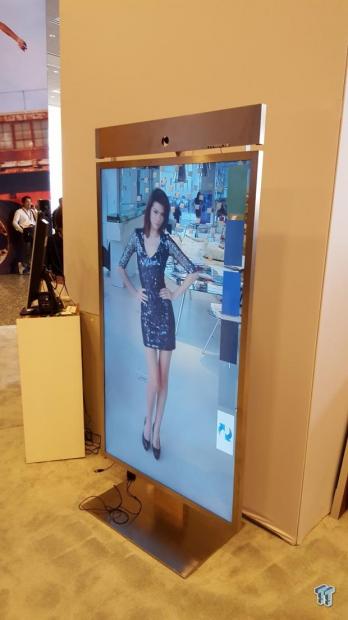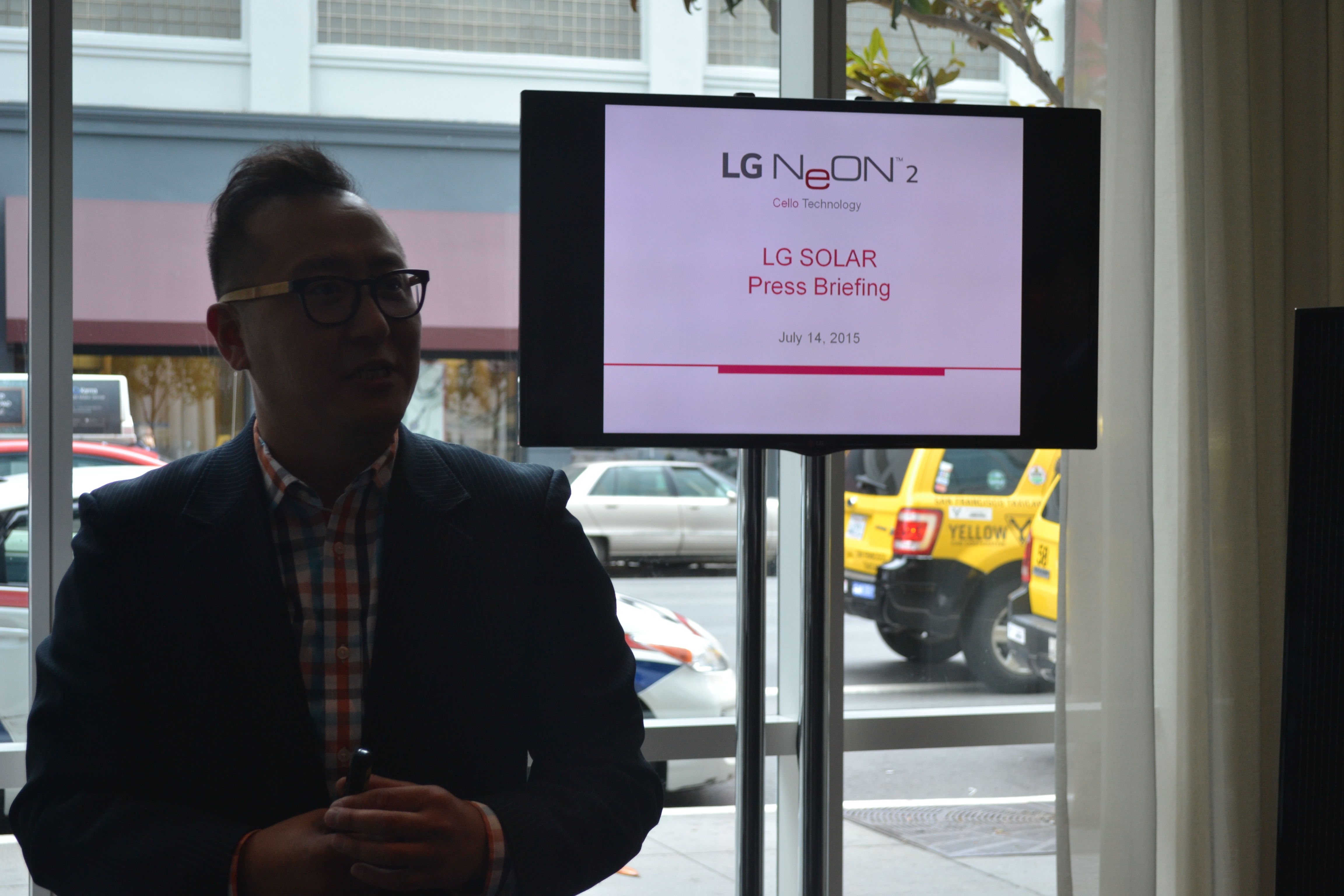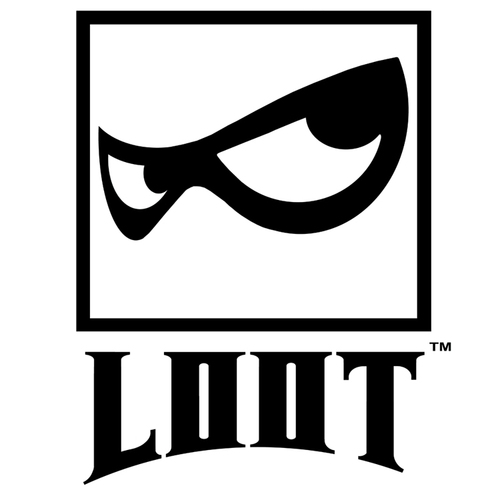
by Lidia Paulinska | Aug 21, 2015
August 2015 – One of the major announcements at this year’s IDF was the availability and applications of the Realsense stereo 3D camera system in modules, tablets, and laptops. The technology was featured in a large section of the conference area and the display areas.
Targeting consumer applications, they were showing off the speed and accuracy of the technology with a couple of different exhibits. One was a 3D printing demonstration. It featured taking a 360 degree Stereo 3D photo of a person’s head, and then in real time transferring it to a 3D laser printer. The printer carved the image into a block of Lucite and producing an embedded 3D likeness of the person. The demonstration was so popular that they had to go to rotating time and call back system to get the images taken and printed. While the image capture is fast, under a couple of minutes, the laser printer averages about 20-25min per print which is what caused the queue for the demo.
One of the other heavily attended demo was a mirror with the integrated RealSense camera. The camera would take a 3D image of the person in front of the mirror. The mirror is actually a half mirrored display that can then superimpose jewelry on the person in the mirror. The system allows for the selection of earrings and necklaces on the people in the mirror. This system was very quick on setup – under 1 minute and very responsive to movement. The system is a prototype and had some challenges if there was more than 1 person in the view of the camera, but on the whole it worked well.
There were a number of other RealSense applications targeted at consumers being shown highlighting the measurement capabilities, depth & relative location capabilities, and virtual showroom/furniture capabilities. These have been shown in prior shows, and second generation software was the main display for these technology applications.

by Lidia Paulinska | Aug 9, 2015
July 2015 – At the IMEC Technology Forum prior to the start of Semicon West 2015, President Luc Van Den Hove started his presentation with bringing the times when the servants were on service for rich people. They were “invisible” eyes and hands that were ready for any request. Today, the role of technology is to take that place. Just like the servants years ago nowadays technology has to learn how to become smarter and serve the needs of people better. The only difference he said, is that instead of creating a comfortable living for just a few people, technology can make many people on our planet happy and comfortable.
One of the groups that really see the changes in their standard of living by using technology in the form of electronics devices, are senior citizens. The market for wearables is going to reach $80B USD by 2020. A heavy focus of the market will be on that segment. It is important that the use of wearables fade into our life and be se seamlessly integrated, intuitive and minimally simple. IMEC’s advanced wearable solutions laid the foundations for the creation of intuitive environments. They are bridging the technology gaps in the platform of sensors by evolving them from being just smart to being intuitive. In concluding on the sensors, he stated that in order to serve properly, the sensors have to be: invisible, low cost, ultra-low power, manage multiple parameters and be accurate in normal operation. As an example Mr Van Den Hove described the use of wearables that have utilized IMEC technology as such: a textile-integrated health patch, an EEG platform that provides quality and comfort for users, the Samsung Simband with IMEC Sensing Technology and the Embracelet taking a role of a personal assistant for the elderly.
The presentation continued to show that the logical extension to the use of those technology will be heading in the direction of context-aware sensing & smart personalized algorithms. These will require seamless heterogeneous wireless connectivity that includes cloud communication that will be driving the evolution of higher data rates with short latency. This will create an infrastructure-centric communication environment that is supported by “zero” maintenance along with both data and connection safety and security. To help support this trend, IMEC has developed technology for software reconfigurable radios for 4G and 5G cellular use as well as radios for zigbee and smart metering WiFi sensors. The person-centric communication environment is evolving towards lower power data transfers that the resulting big data & analytics. As a side light at the presentation they showed advancement in the area of data and low power communication was the IMEC developed world’s lowest power BLE solution.
As we know happy people worry less. The presenter observed that technology does not solve some of the societal stress factors such as money, work or economy. Technology however, is definitely helpful to address and solve some of concerns related to health problems. Advance technology development for the investigation of cancer issues range from electronics for the separation and identification of cancer cells to combating metastatic cancer. IMEC is bridging the technology gaps required by the creation of high-throughput high-content cell screening. As an example they showed a solution developed with Nano-electronics that sorts 20 million cells/sec and classifies them in real time at the rate of 2000 images/sec. Transportation is another are that technology has put its footprint on, and is being used to address a holistic approach to the field. The Holy Grail, of course are autonomous cars that can operation in the cross paths of safety, comfort and efficiency. But autonomous driving would not be gaining momentum nor achieve ubiquitous use, without low-cost mass-produced radars. Technology is heading towards the production of high performance radars in a single CMOS chip. IMEC presented the world’s first high-resolution 79GHz CMOS radar module. Another step towards bridging the required technology gaps is the creation of new user interfaces. These include a 3D vision skin and the use of acoustic holograms. Searching into nature, researchers chose to mimic the view seen in the eye of a fly and combine it with echo-location. This has created a vision and ultrasound system integrated in flex 3D vision skin. The skin is composed of arrays of thin-film photodetectors & piezo-electric devices & with distributed control electronic.
Next part of the presentation of Mr Van Den Hove focused on sources and technology for renewable energy. Solar photovoltaic PV conversion outputs for silicon solar cells are currently efficient to rates below an average of 20%. For energy storage, solid-state Li-Ion batteries are required to be compact, safe, high power & have a high energy density. New technology is working on 3D solid-state batteries where the challenges are to create them to be fast, reliable and safe charging. The future that will use these technologies is being driven by smart cities heading towards the design and building of net zero-energy buildings. To help address this, IMEC has developed a solar cell that has a World-record efficiency of 22.5% with an N-pert silicon solar cell. Final food production was addressed as an area that will require a activity and high attention. IMEC has created solutions including compact hyperspectral imaging electronics and cameras that can be attached to the drones. These imaging solutions are being used in inspection of the food on the field to help increase yield from the crops.

by Lidia Paulinska | Aug 9, 2015
At the North America Intersolar Conference that took place in San Francisco, LG Electronics announced the innovative solar system LG NeON2 that will be available in US in August 2015. The LG NeON 2 was already awarded last month with the Intersolar Europe Photovoltaic Award. It is equipped with their newly developed “Cello” technology. “Cello” stands for Cell Connection, Electrically, Low Loss, Low Stress and Optical Absorption Enhancement.
During the press conference David Cheng, Senior Product Manager identified four (4) big improvements that come with the LG NeON 2 technology: increased reliability, upgraded durability, enhanced performance and improved efficiency in space management. The innovative cello technology utilizes 12 connection wires instead of just 3 busbars, which was the technology used in the previous LG solar panels. The new wiring design allows the panels to utilize scatter light more effectively for better absorption, while reducing the electrical loss by spreading the current over 12 cell busbars. As a result, of the improved temperature handling and power distribution, the LG NeON 2 can generate more electricity on a sunny day and performs better on cloudy days than prior panels. Whereas conventional p-type silicon modules suffer from Light Induced Degradation, the NeON 2 modules use n-type silicon material and uses the Multi–Wire Busbar cells for increased performance and reliability. This combination allow the annual degradation to be reduced by a up to 2 percent the first year and not more than 0.6 percent per year in the following 24 years. In addition they re-manufactured the design to give it a reinforced frame. As a result LG has extended the product warranty up to a 12 full years.
In San Francisco LG presented the flagship NeON 2technolgy that is available as a 320W residential panel. This product is ideal for the homeowner who wants to maximize the energy production potential within a limited roof space. Along with the residential product they introduced the Mono X NeON 72, well suited for commercial applications. Two models of the Mono X NeON 72 are designed to deliver outputs of 360 and 365 watts, in 72 cell 77-inch by 39-inch panel. This new series builds on the success of LG’s award winning 60-cell Mono X NeON panel.

by Lidia Paulinska | Jul 1, 2015
Ori Inbar is the organizer of the Augmented World Expo and the Executive Director of AugmentedReality.org. After a slight delay from the scheduled time at the show while Ori was addressing physical realities of the dynamics of a several hundred attendee show logistics on opening day, we sat down for a short talk on AR, VR, where the industry is and where he thinks it is going.
The first topic was will the technology hold this time and is there a monetization model for it. Ori felt that just like mobile, the monetization plan starts with the business and industrial sector. There is a ramp and a learning curve and the tech has to get a foothold, but once it does the applications advance and the products become standard. This is what is happening now with Augmented Reality (AR) in the enterprise and life science space. Manufacturing, ICT & Enterprise are both embracing and driving the monetization of the technology in the areas of training and for technicians. This is the first stage like the transition from “block” phones to flip phones in Mobile.
The next transition was moving these flip phones to large display phones/PDAs and then smart phones. This was a consumer driven cycle and primarily driven by the experience of the phone. This is similar to Virtual Reality (VR) which is still incubating and trying to hone in on the correct experience for the market. Just like the smart phones were driven by the content of the app creation marketplace, a similar content availability needs to take place for VR.
Ori continued, that there is a use model difference, since VR is a closed screen, it is a download based product. All of the content is created and scripted for consumption such as films, games, travel replays and documentary style information. AR on the other hand is a see-through overlay type of experience. The content is typically streamed to the unit in real time based on the situation and feedback from a camera or the user and providing direction. This creates a dynamic content environment, and it is also much more familiar to the user. The AR market is starting to get consumer gaming and other interactive tasks in development already. An example is companies like Lyteshot that are at the expo.
All of this means the evolution is progressing. There are new and exciting applications coming to market every day such as Recon Instruments new ReconJet eyeware to bring AR glasses as an overlay display device for an SAP mobile app. The Recon Jet comes preloaded with software for sports and athletes. Cyclists and runners can see their performance metrics such as speed/pace, distance, duration, ascent/descent, heart rate, cadence, and power. The eyeware has a developer’s kit for further integration with smartphones and that sort of work will bring the product to the consumer market.
He continued that right now the AR and VR worlds are diverse and competitive, but standards are coming in. This will help developers as they can target larger markets for their efforts, not must one model or vendor and it should help with the content creation and availability issues. Another big advance is common terminology; there is an effort to standardize a language for AR and VR which will allow the community to converse and share ideas more rapidly. Ori indicated that this is what is needed to help tie the community together. In short – AR will stick in the market this time, and VR has a good chance also, but it is up to the community to listen to the customers, not just develop for themselves.

by Lidia Paulinska | Jun 25, 2015
At E3 2015 we had a chance to sit down for a 1:1 with Loot Interactive co-founder David Sterling at their first “press and partner” evening event held at the show. In a very well attended event at a local Mexican restaurant we talked to David about the Indie game marketplace and how Loot Interactive was trying to stand-out from the crowd.
Unlike most indie publishers, they are not targeting just F2P games on the mobile phone & tablet platforms. Instead they are going for the console market because the environment is more immersive, a directed action (you are choosing to play a game not killing time until a bus or train) with a bigger screens. While the games they are currently publishing are based on the Unity flow and not epic graphics crazy, the ability to build challenging stories for the game allows them to present a new spin on the discovery game genre.
The console, due to its closed operating system, known hardware configuration and now integrated connectivity allows the games to streaming based so there are options for more engaging action than a single download mobile game. As an indie publisher, they can search for games from innovative developers from different genres and bring the games together. The purpose was to help expose these interesting games and unique stories that otherwise would not be told to a large audience. It also allows them to developmentally, try different content approaches to AR and VR with products like the Sony Morpheus platform. This can bring new experiences to the user, and as an indie publisher, bring a variety of titles to the product rather than relying on just continuation of a single franchise title.
At this time, David is focusing on finding new titles, and new developers to bring into their publishing fold. Down the road, the group will be looking into implementation of the transmedia angles on the titles they produce. Being able to support other types of media – books, table games, TV, movies, etc is always important for a creative story – but for now, Loot Interactive is focusing on the console game aspects. David indicated they need to full establish themselves and get a foot hold in the market, before branching off into to many other things – that is how companies get lost in the growth cycle.




